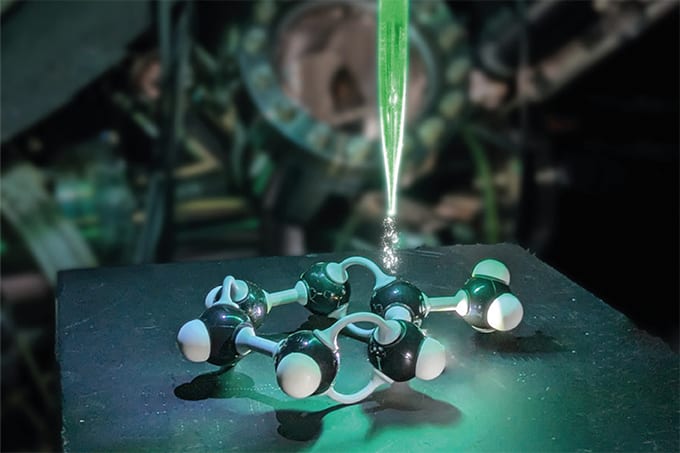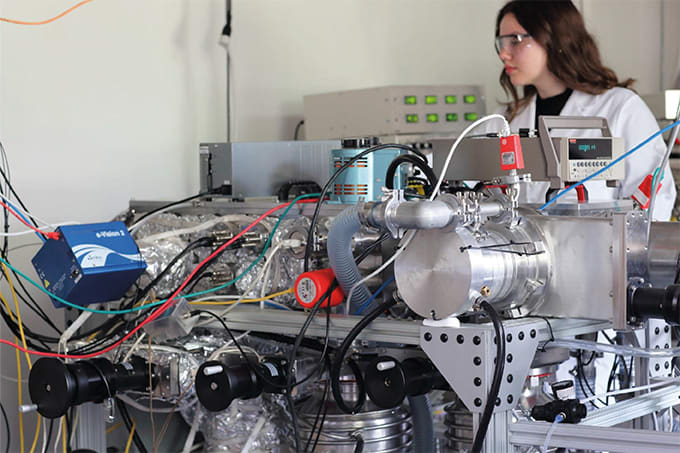Liposomes have been widely investigated and used for drug delivery applications since the 1960s (1–3). Their interior volume has been employed to entrap hydrophilic therapeutics, relying on encapsulation to provide a large payload, confer stability to sensitive molecules, and facilitate delayed release. Moreover, the exterior of the lipid bilayer has been functionalized with molecules capable of providing targeting of liposomes to specific tissue types using antibodies, for example. The incorporation of PEGylated lipids can help minimize clearance of liposomes by the reticuloendothelial system. Tailoring the size of liposomes helps target the leaky vasculature of tumor tissues as oppose to healthy tissues. Additionally, the incorporation of pH or thermosensitive lipids gives greater control over the release of the payload.
Many properties that make liposomes advantageous for drug delivery also make them attractive for analytical applications. For example, high concentrations of hydrophilic molecules, such as visible or fluorescent dyes, may be encapsulated, while the exterior may be functionalized with antibodies to serve as a more sensitive alternative to the traditional enzyme/substrate-based amplification in enzyme-linked immunosorbent assays (ELISA) (4). The lipid bilayer can support non-traditional biorecognition elements, such as gangliosides, to allow targeting of toxins, while entrapping DNA within liposomes can serve as templates for signal amplification in immunoPCR-type applications (5). These and a wide array of other in-vitro analytical techniques using liposomes have been thoroughly reviewed in other resources (6, 7). One of the key challenges with particle-based labels, including liposomes, in bioanalytical techniques is overcoming the mass-transfer limitations that lead to suboptimal detection limits and prolonged assay times. Recently, a method was developed that combined the encapsulation of high concentrations of fluorophores with the ability to direct DNA probe and oleic acid-iron oxide functionalized liposomes via a magnetic field to an underlying binding surface in a sandwich hybridization assay (8). This microtiter plate-based approach yielded a lower limit of detection, decreased reagent usage, and a shorter assay time compared with the same assay performed in the absence of a magnetic field – and it could be applied to standard ELISA-type formats. In this example, a magnetic field provides direction to the underlying surface to promote binding events by the liposomal signaling species (8). However, other analytical uses of magnetic liposomes include their utility as biocompatible cell-sorting options (9) and as vessels to store and pre-concentrate substrate molecules for flow injection-based enzyme assays (10). In vivo, liposomes using entrapped or membrane-embedded paramagnetic or superparamagnetic species have been used to provide contrast in magnetic resonance imaging (MRI) applications (11). And there have been investigations with magnets to direct iron oxide functionalized liposomes to tumor sites (12) as well as to provide localized magnet-induced hyperthermia (13). Other studies have combined magnetic species with thermosensitive lipids in liposomes to afford content release caused by localized heating (14). Historically, great parallels have existed between the drug delivery realm and bioanalytical techniques using liposomes, and yet although these two areas have drawn from each other, they have advanced independently. When I consider coupling recent advances in magnet-enhanced drug delivery with developments in biorecognition and the functionality that can be engineered in microfluidic systems, it seems that – through combined efforts – a whole realm of yet unrealized analytical tools are possible.
References
- AD Bangham and RW Horne, “Negative staining of phospholipids and their structural modification by surface-active agents as observed in the electron microscope”, J Mol Biol, May, 8, 660–668 (1964). PMID: 14187392. AD Bangham, MM Standish, and JC Watkins, “Diffusion of univalent ions across the lamellae of swollen phospholipids”, J Mol Biol, August, 13(1), 238–252 (1965). PMID: 5859039. TM Allen and PR Cullis, “Liposomal drug delivery systems: from concept to clinical applications”, Adv Drug Deliv Rev, 65(1), 36–48 (2012). PMID: 23036225. JP O’Connell, U Piran, DB Wagner; Becton Dickinson and Company (Franklin Lakes, NJ) assignee, “Sac or liposome containing dye (sulforhodamine) for immunoassay US patent 4,695,554”, (1987). JT Mason ET AL., “A liposome-PCR assay for the ultrasensitive detection of biological toxins”, Nat Biotechnol, 24(5), 555–557 (2006). PMID: 16617336. HA Rongen, A Bult and WP van Bennekom, “Liposomes and immunoassays”, J Immunol Methods, 204(2), 105–133 (1997). PMID: 9212829. KA Edwards, ed., “Liposomes in Analytical Methodologies”, Pan Stanford Publishing (2016). KA Edwards and AJ Baeumner, “Enhancement of heterogeneous assays using fluorescent magnetic liposomes”, Anal Chem, 86(13), 6610–6616 (2014). PMID: 24941245. LB Margolis, VA Namiot, and LM Kljukin, “Magnetoliposomes: another principle of cell sorting”, Biochim Biophys Acta, 735(1), 193–195 (1983). PMID: 6626548. V Roman-Pizarro, JM Fernandez-Romero, and A Gomez-Hens, “Fluorometric determination of alkaline phosphatase activity in food using magnetoliposomes as on-flow microcontainer devices”, J Agric Food Chem, 62(8), 1819–1825 (2014). PMID: 24495223. GW Kabalka et al., “Gadolinium-labeled liposomes containing paramagnetic amphipathic agents: targeted MRI contrast agents for the liver”, Magn Reson Med, 8(1), 89–95 (1988). PMID: 3173073. JP Fortin-Ripoche et al., “Magnetic targeting of magnetoliposomes to solid tumors with MR imaging monitoring in mice: feasibility”, Radiology, 239(2):415–424 (2006). PMID: 16549622. M Shinkai et al., “Intracellular hyperthermia for cancer using magnetite cationic liposomes: in vitro study”, Jpn J Cancer Res, 87(11), 1179–1183 (1996). PMID: 9045948. P Pradhan et al., “Targeted temperature sensitive magnetic liposomes for thermo-chemotherapy”, J Control Release, 142(1), 108–121 (2010). PMID: 19819275.




